The Vernal Equinox, and the start of Spring, occurred March 19, 2020, at 10:59 PM CDT.
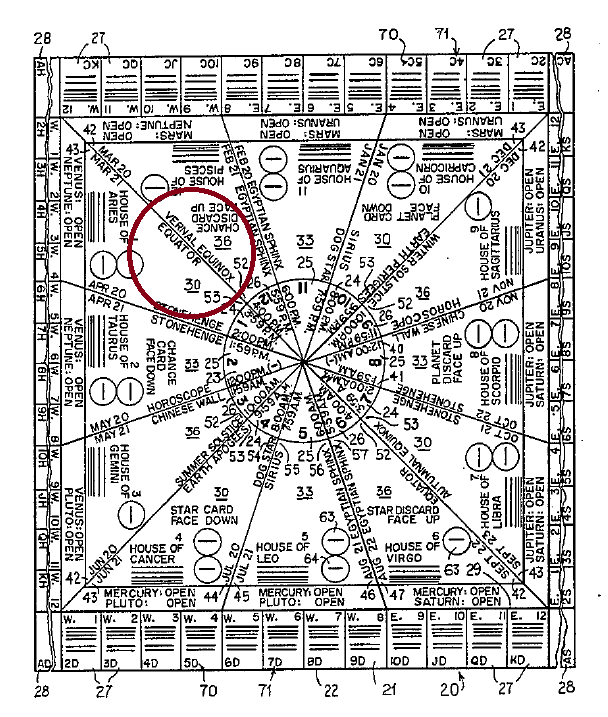

The Vernal Equinox, and the start of Spring, occurred March 19, 2020, at 10:59 PM CDT.

In Facebook, Inc., v. Windy City Innovations, LLC, [2018-1400, 2018-1401, 2018-1402, 2018-1403, 2018-1537, 2018-1540, 2018-1541] (March 18, 2020) the Federal Circuit hold that the Board erred in allowing Facebook to join itself to a proceeding in which it was already a party, and also erred in allowing Facebook to add new claims to the IPRs through that joinder.
Exactly one year after being served with Windy City’s complaint for infringement of U.S. Patent Nos. 8,458,245, 8,694,657, 8,473,552, and 8,407,356, Facebook petitioned for inter partes review of several claims of each of the patents. Seven months later, after Windy City identified the claims it was asserting, Facebook filed two additional petitions for IPR of additional claims of two of the challenged patents, together with a motion for joinder. Although this was now well more than a year after Facebook had been served, the Board nonetheless instituted Facebook’s two new IPRs, and granted Facebook’s motions for joinder.
The Federal Circuit examined the statutory language and concluded that joinder was not proper. It noted that the plain language of § 315(c) indicates that the exception to the time bar offered by the joinder provision only applies if there is an instituted IPR, meaning that a first petition must have been timely under § 315(b), among other requirements. It went on to note that subsection (c) then provides that after an inter partes review has been instituted, the Director, in his or her discretion, “may join” “as a party to that inter partes review” “any person” who has filed “a petition under section 311 that the Director . . . determines warrants the institution of an inter partes review under section 314.”
The Federal Circuit observed that the Board was operating under the premise that § 315(c) authorizes two proceedings to be joined, rather than joining a person as a party to an existing proceeding. The Federal Circuit said that the Board’s understanding of § 315(c) is contrary to the plain language of the provision. Section 315(c) authorizes the Director to “join as a party to [an IPR] any person who” meets certain requirements, i.e., who properly files a petition the Director finds warrants the institution of an IPR under § 314. The Federal Circuit said that no part of § 315(c) provides the Director or the Board with the authority to put two proceedings together. That, the Federal Circuit pointed out, is the subject of § 315(d), which provides for “consolidation,” among other options, when “[m]ultiple proceedings” involving the patent are before the PTO.
The Federal Circuit admitted the possibility that the Board was in fact intending to join Facebook as a party to its previously instituted IPRs, and not joining the IPR proceedings themselves, but found that the clear and unambiguous language of § 315(c) does not. The Federal Circuit said it would be an extraordinary usage of the term “join as a party” to refer to persons who were already parties. The Federal Circuit concluded that a party cannot logically be “join[ed] as a party” in a proceeding if it is already a party to that proceeding. The Federal Circuit held that the clear and unambiguous meaning of § 315(c) does not authorize joinder of two proceedings, and does not authorize the Director to join a person to a proceeding in which that person is already a party.
In Illumina, Inc., v. Ariosa Diagnostics, Inc., [2019-1419] (March 17, 2020) the Federal Circuit reversed the district court’s determination that claims of U.S. Patent Nos. 9,580,751 and 9,738,931 were invalid under 35 U.S.C. § 101 as directed to an ineligible natural phenomenon.
Illumina’s related U.S. Patent 6,258,540, which claimed a method for detecting the small fraction of paternally inherited cell-free fetal DNA in the plasma and serum of a pregnant woman, were famously held invalid under 35 U.S.C. § 101 back in 2015 because they were directed to “matter that is naturally occurring”—i.e., the natural phenomenon that cell-free fetal DNA exists in maternal blood. The ‘751 and ‘931 patents presently at issue were based upon the “surprising” discovery that the majority of the circulatory extracellular fetal DNA has a relatively small size of approximately 500 base pairs or less, which meant that fetal DNA could be amplified by separating extracellular DNA fragments which are smaller than approximately 500 base pairs.
The Federal Circuit noted that this was not a diagnostic invention, or a treatment invention, but a method of preparation invention, and applied the two step Alice/Mayo test. At Step 1, the Federal Circuit said it was undisputed that the inventors of the ’751 and ’931 patents discovered a natural phenomenon. But at step one of the Alice/Mayo test, “it is not enough to merely identify a patent-ineligible concept underlying the claim; we must determine whether that patent-ineligible concept is what the claim is ‘directed to.’” After noting the parties difficulty in identifying the natural phenomenon involved, the Federal Circuit identified the natural phenomenon: that cell-free fetal DNA tends to be shorter than cell-free maternal DNA in a mother’s bloodstream. Turning to the crucial question of whether the claims are “directed to” that natural phenomenon, the Federal Circuit concluded that the claims are not directed to that natural phenomenon but rather to a patent-eligible method that utilizes it.
The Federal Circuit explained the claims in this case are directed to methods for pre-paring a fraction of cell-free DNA that is enriched in fetal DNA. The methods include specific process steps—size dis-criminating and selectively removing DNA fragments that are above a specified size threshold—to increase the relative amount of fetal DNA as compared to maternal DNA in the sample. These process steps change the composition of the mixture, resulting in a DNA fraction that is different from the naturally-occurring fraction in the mother’s blood. Thus, the process achieves more than simply observing that fetal DNA is shorter than maternal DNA or detecting the presence of that phenomenon.
Roche insisted that the claims in this case are no more eligible than the claims at issue in Ariosa, but the Federal Circuit disagreed, noting that in Ariosa, the relevant independent claims were directed to a method “for detecting a paternally inherited nucleic acid” or a method “for performing a prenatal diagnosis,” and the only operative steps in the claims were “amplifying” (i.e., making more of) the cell-free fetal DNA and then “detecting [it],” “subjecting [it] . . . to a test,” or “performing nucleic acid analysis on [it] to detect [it].” The claims were ineligible because, like the invalid diagnostic claims at issue in Mayo, Athena, and Cleveland Clinic, they were directed to detecting a natural phenomenon.
This case shows the importance of how the invention is characterized to the 101 analysis
In the midst of the Covid-19 pandemic, everyone could use a wee bit of the luck of the Irish. Here are collection of shamrock design patents to bring a little luck to you on St. Patrick’s Day 2020:
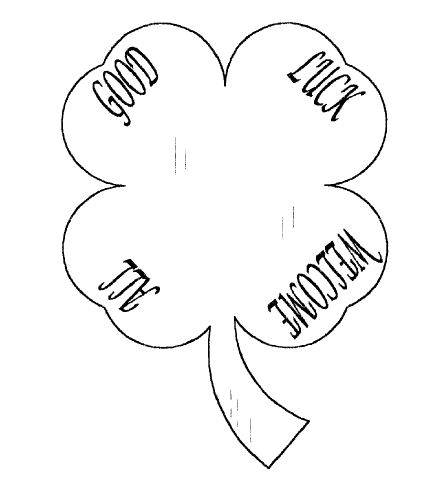
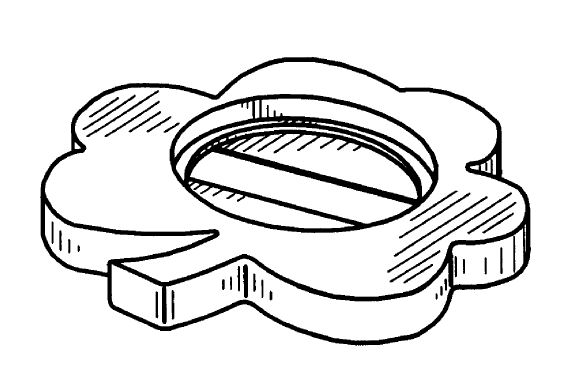
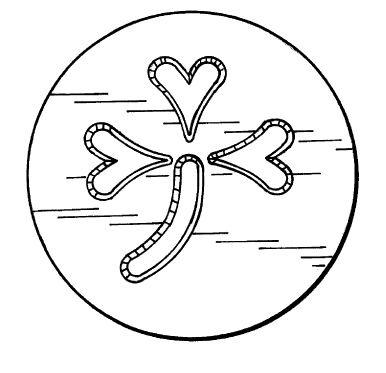
Finally, what says “lucky” more than a Shamrock Shaped Bingo Dobber:

In Hafco Foundry and Machine Co., Inc. v. GMS Mine Repair and maintenance, Inc., Inc., [2018-1904] (March 16, 2020), the Federal Circuit affirmed the judgment of infringement of U.S. Patent No. D681,684 for a “Rock Dust Blower, ” affirmed the of GMS’ request for a new trial, and remanded for a final judgment on damages.
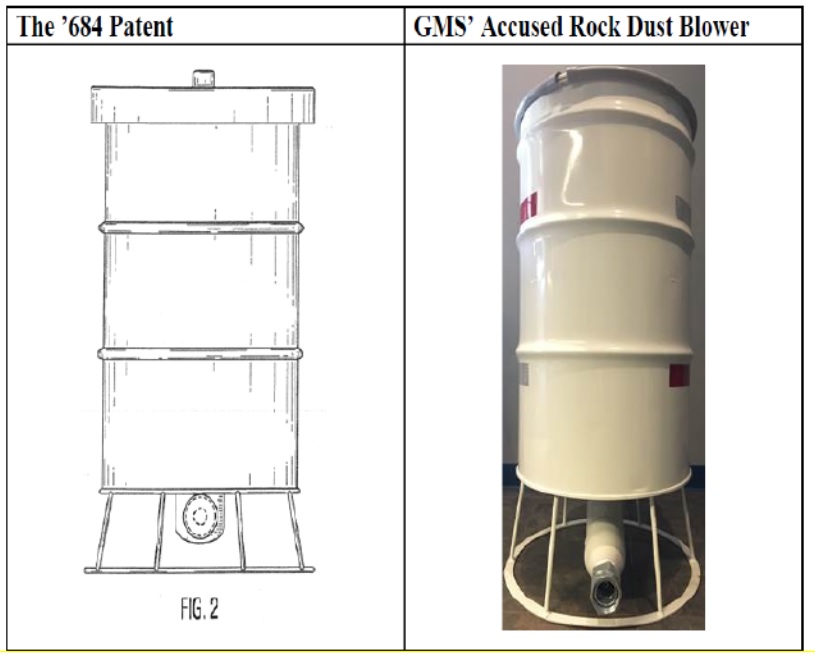
On appeal, GMS argued that the jury instructions incompletely and prejudicially abridged the Gorham test,” and failed to instruct that the hypothetical ordinary purchaser is to view the patented and accused designs in the context of the prior art.
GMS complained that the jury instructions defined the ordinary observer as “a person who buys and uses the product at issue.” However GMS failed to object to this language or any explanation of the purported flaw. GMS also argued the jury should have been instructed that small differences between the accused and the claimed design will avoid infringement, but GMS did not ask for such an instruction, and in any event the Federal Circuit said that it was not correct, noting that the designs do not have to be identical for design patent infringement to be found.
As to GMS’s second point, it argued that the jury should have been instructed to “familiarize yourself with each of the prior art designs that have been brought to your attention,” citing IPO Model Design Patent Jury Instructions. However GMS did not introduce any prior art. The Federal Circuit said that given that there was no prior art introduced at trial, no attempt by GMS to introduce the prior art, and no proposed jury instruction on this issue, the purported exclusion of this instruction cannot be error.
The Federal Circuit affirmed the finding of infringement and remanded for a determination of the damages.
Kaken Pharmaceutical Co., Ltd. v. Iancu, [2018-2232] (March 13, 2020), the Federal Circuit reversed the PTAB’s claim construction, and vacated its determination that the challenged claims of U.S. Patent No. 7,214,506 on a method for treating onychomycosis were unpatentable as obvious.
Kaken proposed that the phrase “treating a subject having onychomycosis” means “treating the infection at least where it primarily resides in the keratinized nail plate and underlying nail bed.” The Board rejected Kaken’s construction as too narrow, concluding that “the express definition of onychomycosis includes superficial mycosis, which in turn is expressly defined as a disease that lies in the skin or visible mucosa.
The Federal Circuit found that the prosecution history—which includes, specifically, statements made by Kaken to overcome a rejection and the examiner’s statements explaining withdrawal of the rejection based on those statements — provides decisive support for limiting the claim phrase at issue to a plate-penetrating treatment of an infection inside or under the nail plate. A patent’s prosecution history can “inform the meaning of the claim language by demonstrating how the inventor understood the invention and whether the inventor limited the invention in the course of prosecution, making the claim scope narrower than it would otherwise be. Particularly useful are “express representations made by or on behalf of the applicant to the examiner to induce a patent grant,” which include “arguments made to convince the examiner that the claimed invention meets the statutory requirements of novelty, utility, and nonobviousness.” The Federal Circuit said that Kaken’s statements during prosecution, followed by the examiner’s statements, make clear the limits on a reasonable understanding of what Kaken was claiming.
The Federal Circuit thus reversed the Board’s claim construction, and vacated the determination of obviousness based upon the erroneous construction.
In Personalized Media Communications, LLC, v. Apple Inc., [2018-1936] (March 13, 2020), the Federal Circuit reversed the Board’s construction of a claim term of U.S. Patent No. 8,191,091 ON methods for enhancing broadcast communications, vacating the anticipation and obviousness determinations of the corresponding claims, and affirmed the remainder of the Board’s determinations of anticipation and obviousness.
The Federal Circuit noted that the prosecution history, in particular, may be critical in interpreting disputed claim terms because it contains the complete record of all the proceedings before the Patent and Trademark Office, including any express representations made by the applicant regarding the scope of the claims. Accordingly, even where prosecution history statements do not rise to the level of unmistakable disavowal, they do inform the claim construction.
At issue was the meaning of “an encrypted digital information transmission including encrypted information,” and in particular whether this term is limited to digital information or can also include analog information. The Federal Circuit began its analysis with the claim language, noting that the claims use the adjective “digital” to describe the “information transmission,” thus supporting the view that the information is, in fact, digital. On the other hand, the Federal Circuit added, the claims do not say “entirely digital.”
Although the Federal Circuit agreed that with the Board that the specification’s broad definition of “programming” could encompass analog signals, it did not agree that it necessarily requires them. Instead, the definition is largely agnostic to the particular technology employed.
The Federal Circuit turned to the specification, finding some relevant statements, but noting that they are not definitional; instead, they are merely illustrations that use open-ended, permissive phrases such as “usually,” “for example,” and “with capacity for.” And when considered in the context of the more than 280 columns of text in the specification of the ’091 patent, these two passages fall far short of defining the relevant terms through repeated and consistent use.
Finally, the Federal Circuit turned to the prosecution history. While the Board found the prosecution history inconclusive, the Federal Circuit disagreed, noting that even where prosecution history statements do not rise to the level of unmistakable disavowal, they do in-form the claim construction. The Federal Circuit said an applicant’s repeated and consistent remarks during prosecution can define a claim term—especially where, as here, there is no plain or ordinary meaning to the claim term and the specification provides no clear interpretation. The Federal Circuit found that the Board erred by effectively requiring the prosecution history evidence to rise to the level of a disclaimer in order to inform the meaning of the disputed claim term, adding the prosecution history provides persuasive evidence that informs the meaning of the disputed claim phrase and addresses an ambiguity otherwise left unresolved by the claims and specification.
Because the Federal Circuit concluded that the disputed claim term was limited to all-digital signals, it reversed the Board’s unpatentability determination for those claims.
In Communications Test Design, Inc., v. Contec, LLC, [2019-1672] (March 13, 2020), the Federal Circuit affirmed the dismissal of CTDI’s declaratory judgment action in favor of Contec’s later filed infringement action, agreeing that equitable considerations warranted departure from the first-to-file rule.
Contec argued that CTDI filed the Pennsylvania action “in bad faith during active licensing discussions, only after inducing Contec to refrain from filing its own complaint against CTDI in a different forum. The district court relying on the timing and content of the parties’ communications, the district court found that “CTDI filed suit in anticipation of Contec’s impending infringement suit.” The district court found that, although CTDI had every right, in its business and legal judgment, to break off negotiations and resort to litigation, it was not permitted to string Contec along just long enough to get the judicial drop and file this lawsuit in its own backyard.
The Federal Circuit noted that as long as the district court acts in accordance with the purposes of the Declaratory Judgment Act and the principles of sound judicial administration, it has broad discretion to refuse to entertain a declaratory judgment action.
The general rule is that the first-filed action is preferred, even if it is declaratory, unless considerations of judicial and litigant economy, and the just and effective disposition of disputes, require otherwise. Trial courts have discretion to make exceptions to this general rule in the interest of justice or expediency, and such exceptions are not rare. When one of two competing suits in a first-to-file analysis is a declaratory judgment action, district courts enjoy a “double dose” of discretion: discretion to decline to exercise jurisdiction over a declaratory judgment action and discretion when considering and applying the first-to-file rule and its equitable exceptions.
The Federal Circuit said that the district court carefully considered the record of the parties’ dispute, up to and including the competing filings, and concluded that several factors warranted departure from the first-to-file rule. Specifically, the court found that: (1) CTDI filed its declaratory judgment complaint in anticipation of Contec’s patent infringement complaint; (2) CTDI’s suit interfered with ongoing negotiations between the parties and did not serve the objectives of the Declaratory Judgment Act; and (3) on balance, the Northern District of New York is a more convenient forum. Overall, the Federal Circuit found no abuse of discretion in the district court’s analysis. The Federal Circuit affirmed the district court’s dismissal.
In Customedia Technologies, LLC v. Dish Network Corporation, [2018-2239, 2019-1000] (March 6, 2020), the Federal Circuit affirmed the PTAB’s determination that U.S. Patent Nos. 8,719,090 and 9,053,494 on comprehensive data management and processing systems were ineligible under 35 U.S.C. §101.
The Federal Circuit followed the Supreme Court’s two-step framework for determining patent-eligibility under §101. At Step 1, the Federal Circuit found that the claims at issue here were directed to the abstract idea of using a computer to deliver targeted advertising to a user, not to an improvement in the functioning of a computer. The Federal Circuit explained that to be a patent-eligible improvement to computer functionality, it requires the claims to be directed to an improvement in the functionality of the computer or network platform itself. Improving a user’s experience while using a computer application is not, without more, sufficient to render the claims directed to an improvement in computer functionality. In sum, software can make non-abstract improvements to computer technology just as hardware improvements can. But to be directed to a patent-eligible improvement to computer functionality, the claims must be directed to an improvement to the functionality of the computer or network platform itself.
At step two, the Federal Circuit agreed with the Board that the elements of the claims, considered individually and as an ordered combination, fail to recite an inventive concept. The Federal Circuit noted that aside from the abstract idea of delivering targeted advertising, the claims recite only generic computer components, including a programmable receiver unit, a storage device, a remote server and a processor. Such generic and functional hardware is insufficient to render eligible claims directed to an abstract idea. The invocation of already-available computers that are not themselves plausibly asserted to be an advance amounts to a recitation of what is well-understood, routine, and conventional.